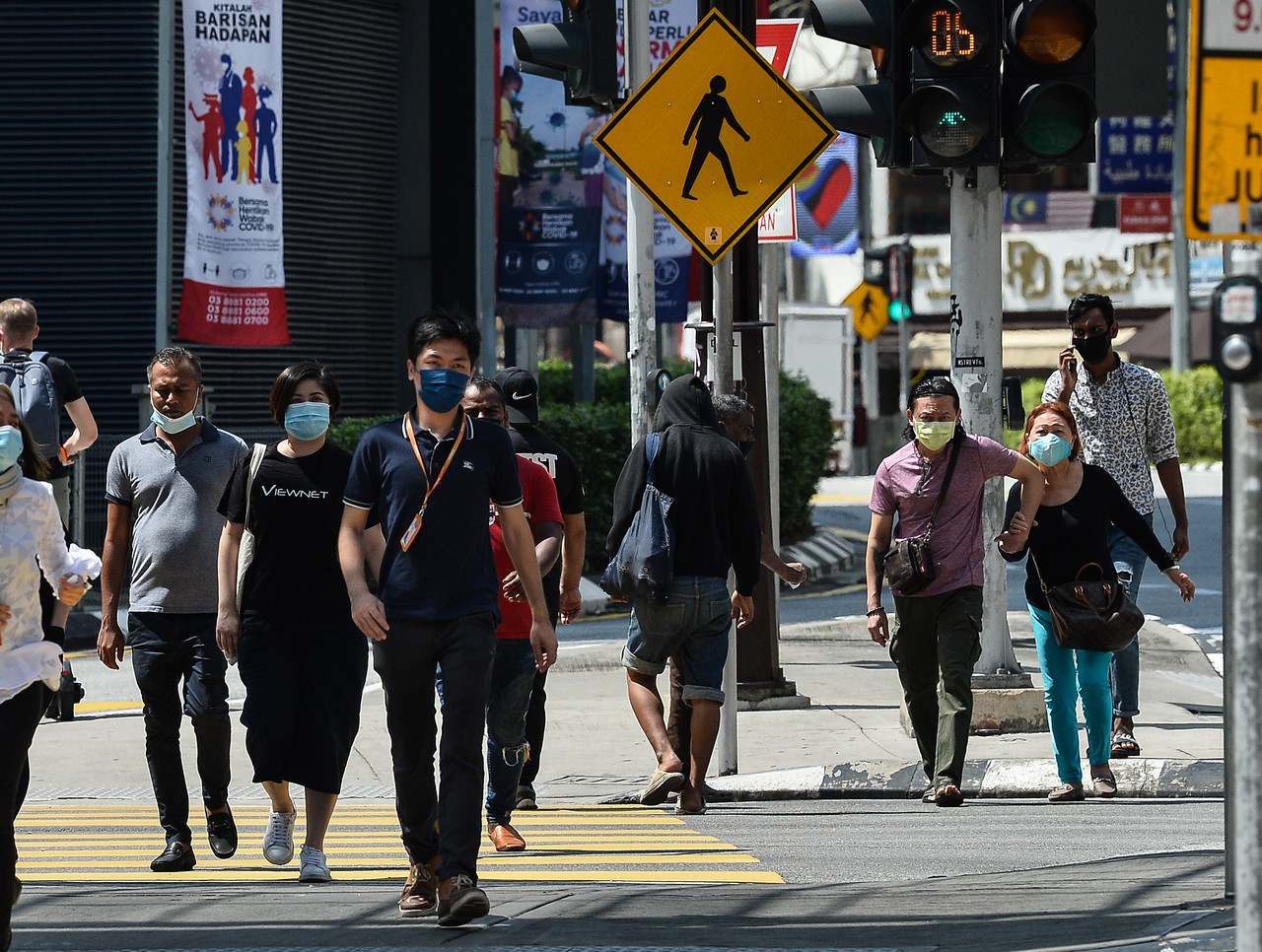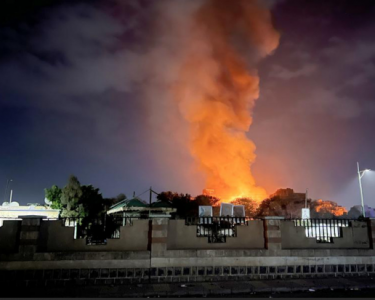By Siti Radziah Hamzah
KUALA LUMPUR, July 7 (Bernama) — In the Book of Revelation, there are four biblical figures known as the four horsemen of the apocalypse, representing Conquest, War, Famine and Death and increasingly, by my account, at least three of these fearsome horsemen are galloping across the planet these days.
The signs are apparent in the current global economy and political environment.
Depending on how one interprets the apocalypse, the three horsemen would be War, Death and Pestilence, with Famine once again hovering over different parts of the world.
Throw in the worst inflation in four decades, and it is no surprise that dark clouds are hovering over the global economy and casting a pall over consumers around the world.
Impact of Russia-Ukraine military conflict, rising inflation
The global economy in 2022 will probably be remembered by two distinct themes — resurging inflation and an imminent recession, largely driven by post-pandemic demand and the war in Ukraine.
Inflation is on the rise globally, with food and energy prices hitting record highs following the ongoing Russia-Ukraine conflict, which has affected Ukraine’s entire food production and supply chain, from sowing to harvesting to exports.
The United Nations Food and Agriculture Organisation estimates that between 20 per cent and 30 per cent of Ukraine’s agricultural land will remain either uncultivated or unharvested this year because of the war.
In normal times, Ukraine would export about 75 per cent of the grains produced, with about 90 per cent of this shipped from Ukraine’s Black Sea ports.
Russia is currently blocking access to the Black Sea ports, preventing Ukraine from exporting what it has produced. It is this that has driven up wheat and other commodity prices around the world.
The Russia-Ukraine military conflict has also given rise to surging energy prices worldwide with the price of oil now at its highest in almost 14 years.
In turn, fuel price hikes are affecting the production and transport costs of many consumer items, driving prices skywards.
Securing food security
Around the world, nations are grappling with food security and the time has come for Malaysia to realign its focus on the agriculture sector; this is one way to address food shortages as well as cushion the ringgit’s weakness.
In 2020, the country imported RM55.4 billion (US$12.67 billion) worth of foodstuffs. The country is dependent on imports for 88.8 per cent of mutton and 76.4 per cent of its beef.
Technology is today very much a part of the global economy and one way to revolutionise the agricultural industry is by encouraging agricultural start-ups on the proper preparation of land using the appropriate technologies, the use of alternative farming techniques versus conventional farming and the importance of new business models. This is the base to begin with.
But this has to be supplemented by making land available for new farmers and vocational training for all.
This step is necessary amid the growing food protectionism on the global front today. In April, Indonesia imposed a ban on palm oil exports as the country grappled with domestic cooking oil shortages with high prices triggering recent protests in the archipelago.
However, it lifted the ban on palm oil exports on May 23, citing improvements in the domestic supply of cooking oil, but not before the ban had played havoc on the global edible oil markets.
On May 13, the world’s second-largest wheat producer India took a similar step to ban wheat exports to “manage the overall food security of the country and to support other vulnerable countries”.
Meanwhile, Malaysia decided to halt exports of chickens from June 1, among other measures to address the domestic supply shortage. The government partially lifted the ban on June 15.
Inflationary pressures hitting the economies
No country can be immune to inflationary pressures and there is a likelihood that inflation will rise in the near term.
Take the United States for example. The inflation rate in the world’s largest economy rose to a four-decade high of 8.6 per cent in May 2022, driven by a spiralling increase in energy costs of 34.6 per cent year-on-year (y-o-y), and groceries which jumped 11.9 per cent this year.
Other nations such as Switzerland recorded higher consumer prices at 3.4 per cent in June — more than what economists had expected — and the first time since July 2008 that inflation had topped 3.0 per cent.
Nearer to home, Indonesia’s domestic inflation has risen faster than expected by 4.35 per cent y-o-y in June, marking a significant acceleration from the 3.55 per cent rate reported in the preceding month.
Thailand’s headline inflation also surged to hit a near 14-year high in June of 7.66 per cent y-o-y, driven by higher energy prices and also affected by low base effects.
On the domestic front, Malaysia’s inflation accelerated to 2.8 per cent in May 2022 led by higher food prices, which recorded a new high of 5.2 per cent during the month, the highest since November 2011.
Malaysia’s Finance Minister Tengku Zafrul Aziz pointed out that without government subsidies, the country’s inflation rate for May could reach up to 11.4 per cent. Malaysia is expected to record the largest subsidy bill in the country’s history of RM80 billion (US$18.1 billion) this year.
Meanwhile, the country’s Producer Price Index remained high in May 2022 with a growth of 11.2 per cent y-o-y compared with 11.0 per cent y-o-y in April 2022, an indication that inflation could continue to rise in the near term.
Moody’s Analytics economist Denise Cheok said inflation in Malaysia is expected to see some uptick in the coming months. However, the country’s headline inflation has stayed relatively subdued compared to the Southeast Asian region, she added.
“Current inflationary pressures are related more to supply-side concerns, while rate hikes are aimed more at cooling demand-side pressures. However, it is worth noting the role of inflation expectations.
“Central banks need to be seen to be addressing inflation, to combat rising inflation expectations. If expectations of inflation get out of control, we could see upward price spirals that are difficult to stop. A handful of strong rate rises can quell some of these fears,” she told Bernama.
Malaysia’s inflation has been hovering between 2.2 per cent and 2.3 per cent since early 2022 versus countries such as Singapore, the Philippines and Thailand where inflation exceeded 5.0 per cent. This was partly due to fuel subsidies in place in Malaysia, which have tempered high global oil prices which are driving inflation in other countries.
CGS-CIMB Research is projecting Malaysia’s headline inflation to average 3.1 per cent in 2022 and 3.2 per cent in 2023, higher than the 2021 average of 2.5 per cent.
In the recent Malaysia Economic Summit 2022, Malaysia Venture Capital Management Bhd director Manokaran Mottain said the current inflation risks are due to rising raw materials costs, among others.
“Cost-push inflation is happening now. You can raise interest rates so many times but the effectiveness of controlling inflation is not as effective.
“I hope the central bank is mindful of raising the interest rates in the coming months because we are in a different scenario at the moment,” he said at the forum.
Possible recession on the horizon?
Recently, Deutsche Bank and Citigroup warned that the global economy may be heading towards a recession as global central banks step up efforts to raise interest rates to curb inflation.
SPI Asset Management managing partner Stephen Innes said there are no risks of global recession as yet.
“I do not think anywhere near the anecdotal commentaries filling the airwaves. Still, we are in unusual circumstances as the economic recovery post-COVID-19 has necessitated central banks to step on the brakes but the unexpected war in Ukraine has forced central banks into an inflation-fighting mode,” he told Bernama.
However, he noted that if consumers were to stop spending and employment were to fall below expectations, then the odds of a recession could increase significantly.
In a recent research note, Moody’s Analytics said the greatest risk to the economic outlook is the need for the Asia Pacific (APAC) central banks to carefully calibrate policy normalisation to not raise interest rates too fast and staunch economic growth, nor raise rates too slowly and risk capital outflows and currency depreciation as the spread with the US and European interest rates widen.
Malaysia hiked its overnight policy rate (OPR) in May 2022 by 25 basis points (bps) to 2.0 per cent. It was after four back-to-back cuts totalling 125 bps between January and July 2020 that the OPR fell to a record low of 1.75 per cent.
The central bank decided to hike another 25 bps to 2.25 per cent in its July Monetary Policy Committee meeting. This is also BNM’s first back-to-back OPR hike since mid-2010, when interest rates were normalised following the recovery from the 2008/09 global financial crisis.
In June, the US announced the most aggressive interest rate increase in nearly 30 years by 0.75 percentage points to a range of 1.5 to 1.75 per cent, up from zero at the start of the year.
Norway and Sweden have joined the ranks of other central banks to opt for a 50 bps interest rate rise, delivering their biggest policy tightening moves in two decades.
— BERNAMA





